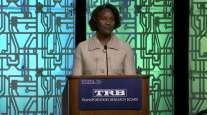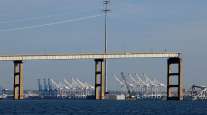Editorial: Trucking at TRB’s Forefront
Hours of highly detailed discussion at this month’s Transportation Research Board annual meeting focused on some of the most daunting long-range challenges facing the transportation industry. But one issue near and dear to the hearts of Transport Topics readers — hauling cargo — was at the forefront, be it along electrified highway corridors or across the last mile.
UPS Inc. is leading the research into the latter area, testing everything from electric-powered three-wheel bicycles to unmanned drones that take off from its familiar brown parcel vans in pursuit of addressing growing demand for final-mile deliveries. And many of those deliveries are for online orders.
There’s little question that more purchasing will be done online in years to come, especially by millennials who don’t know a world without smartphones. But that group’s rapid migration away from brick-and-mortar stores may be somewhat exaggerated. According to one TRB presenter, millennials’ spending is split fairly equally between online and in-store for items such as clothing and electronics, and the demographic still expresses a preference for in-store shopping when it comes to the week’s groceries.
But this doesn’t mean research into next-generation cargo-hauling technology is slowing down.
A representative from Siemens showcased that company’s overhead electric catenary system, which can pull trucks equipped with electric motors — but not necessarily pure-electric trucks — down a highway, saving fuel and cutting emissions.
The economics of purchasing pure-electric trucks was explored at TRB. The verdict: their high price tags typically only make sense if subsidies are attached, as they are, for example, in some port initiatives. Otherwise, they’re still too cost-prohibitive for most fleets, with purchase prices that can reach well into six figures.
But a panelist also made the point that once costs come down, as they often do in the technology realm, the business case could improve. And that’s good; cities around the globe are attacking congestion and working to further curtail engine emissions. Trucks are already cleaner than they’ve ever been, but increasing the number of options at fleets’ disposal (be it a three-wheeled bicycle or an electric- powered truck that can haul freight down an electrified corridor) can help address the never-ending challenge of delivering goods to their destination.



